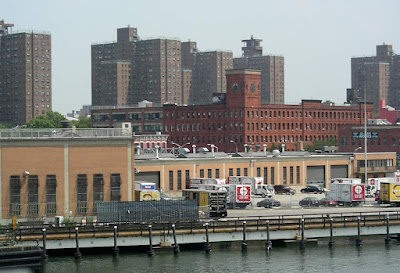Last Summer I found “Winter&Company serial #222686” left for dead by the side of the road.
You can see the resemblance here:
Winter was a contemporary of ESTEY Piano, the original factory in our ClockTower. In its day, Winter was a pretty good piano.
In 1901, Julius Winter purchased the Heller Piano Company of New York, forming the Winter Piano Company at the turn of the century, about 14 years after ESTEY.
By 1903, a new, state-of-the-art factory was erected at 220-226 Southern Boulevard.
That’s what Bruckner Blvd. was called in those days, “Southern”; the original ClockTower address was “Southern and Lincoln” indicating that Winter was just a few blocks from here.
The serial number places manufacture between 1941-1942
And this ad dates from 1946.
Alas, another old piano gone. And to think an elephant’s tusks were probably sacrificed for this.
















































